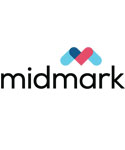Summary
Summary
Anesthesia, which is an integral part of daily care in veterinary hospitals, cannot be defined merely by the time that the patient is unconscious, but rather by a continuum of care that begins at home with the owner and does not end until the patient returns home to the owner for follow-up care. Anesthesia is a multidimensional procedure involving not only the patient’s individual characteristics but also specific and critical equipment, appropriate drugs and drug dosages, diligent physiologic monitoring and support, thorough client communication, and highly trained staff. Using this information, a template for standardized procedures structured in a systematic, stepwise approach is described in the guidelines. This is analogous to the growing emphasis on checklists as error-prevention and organizing tools in human medicine. Standardized methods that use medical-specific checklists have been shown to improve the quality and consistency of healthcare delivery in a variety of clinical settings.59 There is an inherent risk of morbidity or mortality associated with anesthesia, but by following the continuum of anesthesia as described in the guidelines, the risk for anesthetic complications is greatly minimized. In fact, patient health can potentially be improved by increased oxygen delivery via support of both cardiovascular and respiratory systems and by alleviation or elimination of pain.
Some details from these guidelines that warrant special mention are equipment selection/maintenance, pain management, staff training, and client education. Anesthesia is equipment intensive, more so than many other medical disciplines. The best staff training and anesthesia protocols will be nullified if a faulty breathing circuit or malfunctioning valve causes anesthetic complications. Thus, regular equipment maintenance and staff proficiency in its operation are not afterthoughts, but essential, first-line aspects of anesthesia care, as presented here.
Pain management, which is highlighted in these guidelines, is integral to optimal anesthesia and recovery from surgical procedures. The patient’s level of postprocedural discomfort should be evaluated by both the veterinary team and, with guidance from the team, its owner. Proactive use of pain management protocols will enhance the quality of care, patient healing, and owner satisfaction.
Communication with and education of the pet owner are important and necessary aspects of the anesthetic process. All members of the practice team should assume responsibility for conducting an informed dialog with clients about the risks of anesthesia and the commitment of the anesthesia team to decreasing those risks. Staff education equips the practice team to both decrease anesthetic risks and properly educate pet owners about general anesthesia. No aspect of veterinary practice is more dependent on staff education than anesthesia, and detailed anesthesia training protocols are a feature of the guidelines. Training sessions should preferably be accompanied by periodic refresher training and a best-practices approach. If done regularly and purposefully, staff education also creates a continuous improvement culture within the practice and fosters a teamwork environment.
The objective of these guidelines was to make the anesthesia period as safe as possible for dogs and cats while providing a practical framework for delivering anesthesia care before, during, and after the anesthetic procedure. We are confident that using the guidelines, along with supplemental information from suggested references and the online resource center, will allow the anesthetist to meet that objective.





